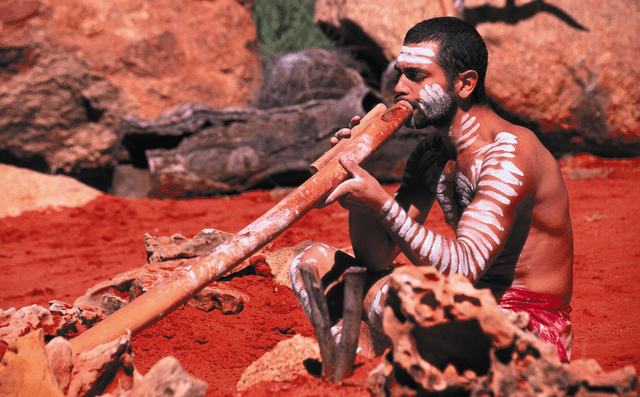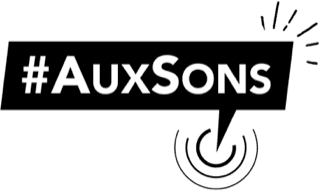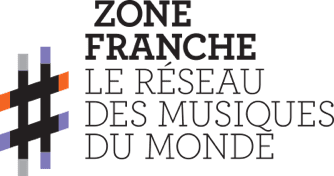Before the European settlement, and before the years of death, destruction and damage of the natives homes, culture and lifestyle in Australia, there were Aboriginals. The Aboriginals, who are reported to be the oldest population of humans living outside Africa, have a culture that archaeologists stretch back to 60,000 years ago. It comes as no surprise that they have such a deep, profound and colorful culture, part of which includes music. Aboriginal music is traditionally vocal, but it includes rare instruments such as the hollow logs, seed rattles and the didgeridoo, and incorporates performances with costumes and paint. Throughout their history, this music has been used to communicate, tell stories and entertain. Today, the Aboriginals make up 3% of the Australian population and some continue with this mode of communication. Is it merely a revival of a lost culture? Or is music the most profound way to communicate for them?
Many indigineous peoples continue to use rituals and cultural practices that they grew up with, so this is not specific to the Aboriginals. Dating back to the times where the Aboriginals used songs to tell stories to pass time during their voyages across the desert, today it is also used as a form of entertainment. The use of the instruments from raw, natural materials is interesting because today, humans have the tools and mechanisms to build instruments from hard metal. Yet, the aboriginals stick to their roots. The didgeridoo is still a hollow tree branch.
Didgeridoo Sound - Australian Instrument
The appreciation that the Aboriginal people have of nature is truly fascinating, and shows how deeply they hold their culture. Their musical culture is being revived before our very eyes, through educational workshops offered to a young audience, both national and international. The Northern Territory of Australia is putting together a variety of festivals and performances in order to « explore the rich history of Aboriginal music and dance », as well as offering the « opportunity to learn more about one of the oldest cultures on the planet », according to the Northern Territory website.
Indeed, after having tried to erase their culture, the Australian government undertook measures to integrate Aboriginals and their cultures into the national narrative. It is in this sense that the Northern Territory Government launched the National Indigenous Music award in 2004. The programme became national four years later, reflecting the growing interest in Aboriginal music. However, personal initiatives are also noteworthy: artists of aboriginal origin have, for some years now, succeeded in making a place for themselves on the national and even international scene by using new technologies and/or adopting musical rhythms foreign to their culture. These rhythms are, for example, reggae from Jamaica or soul music from the United States.
Ali Mills - Waltzing Matilda
However, White Australians artists are not left out. Many of them have have incorporated the didgeridoo into a single or sought to collaborate with Aboriginal artists. This enhancement of elements of Aboriginal culture strengthens the pride of the Aboriginal people while making them more visible and raising awareness of their condition.
The history of Aboriginal culture and particularly its music is fascinating. It is the story of one of the world’s oldest civilisations. It is a story of resilience, resistance, deeply rooted in ecological thinking. It is resolutely a lesson for humanity.
This article is the result of a collaborative project between #AuxSons and Alejandro Abbud Torres Torija, professor at Sciences Po Paris Campus Reims, and regular contributor to #AuxSons. As part of the course “Sounds of the world: music as a mirror of intimacy and the collective”, international students from Sciences Po Paris Campus Reims looked at the links between music from the four corners of the world and sociopolitical issues.
The authors :
Camay DAVIS MCAULEY is a student Journalist, who attends the University of Sussex, England. Coming from a Black Afro-Caribbean background, both her parents are English speakers. Her relationship and knowledge with indigenous music is shallow, although growing up, she would listen to music from her Father’s home country, Sierra Leone, which includes Afrobeats, some English and some Krio speaking. Music is a big part of West African culture, something that she would love to explore more in her personal life.
Maël OXYBEL CASCA is an eclectic and music lover student. Oriented towards the Global South, Maël has a particular interest in discovering new artists and musical styles. Furthermore, his cultural background makes him a person particularly interested in the link between music and political activism such as cultural and intellectual resistance.


